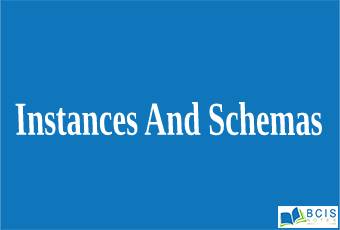
Instances And Schemas
Instances And Schemas are the two important part of the database management system. Instances represents the collection of information and schemas represent the overall description of the database.
Instances
instances are the actual content of the database at a particular point in time. In other words instances are the collection of information stored at a particular moment. The instances can be changed by certain CRUD operations as like addition, deletion of data. It may be noted that any search query will not make any kind of changes in the instances.
Example –
Let’s say a table teacher in our database whose name is class, suppose the table has 60 records so the instance of the database has 60 records for now and tomorrow we are going to add another sixty records so tomorrow the instance have total 120 records. This is called an instance.
Schemas
Schemas are the the logical structure of the database. In other words Schema is the overall description of the database. The basic structure of how the data will be stored in the database is called schema.
There are two types of schemas
- Logical schemas
-It describes the database designed at logical level. - Physical schemas
-It describes the database designed at physical level.
Example-
the database consists of information about teachers and class and the
relationship between them.
The difference between schema and instance are as follows.
| Schema | Instance |
|---|---|
| It is the overall description of the database. | It is the collection of information stored in a database at a particular moment. |
| Schema is same for whole database. | Data in instances can be changed using addition, deletion, updation. |
| Does not change Frequently. | Changes Frequently. |
| Defines the basic structure of the database i.e how the data will be stored in the database. | It is the set of Information stored at a particular time. |
You May Also Like Normalization || Database Management System || BcisNotes

Leave a Reply